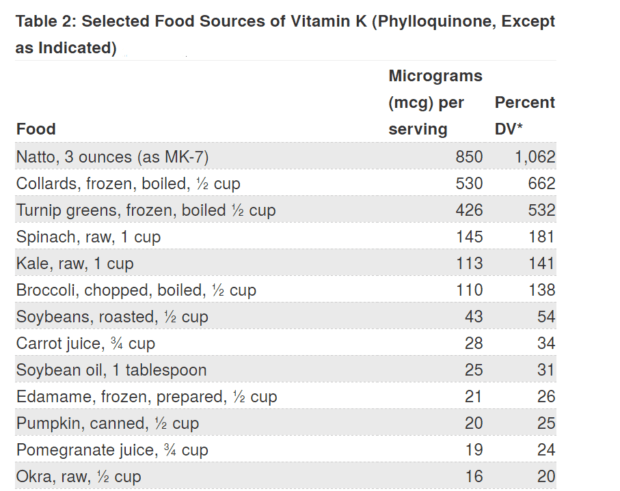
Vitamin D Day
November 2. Every year. It's Vitamin D Day. The hormone precursor is finally getting attention. And it needs it.

November 2. Every year. It's Vitamin D Day. The hormone precursor is finally getting attention. And it needs it.

Vitamin D
When vitamin D comes into your body, it goes through all sorts of processes and is turned into different forms to be effective. In this article, we’ll teach you a little about this process, and how vitamin D works in the body. Where does vitamin D come from? Vitamin

Magazine
What if the key to slowing down the aging process was as simple as getting enough vitamin D? A landmark study published this year in The American Journal of Clinical Nutrition suggests that vitamin D supplementation may do exactly that—by protecting the very structures that keep our cells young.

Vitamin D
For a number of reasons, many people aren’t getting enough vitamin D to stay healthy. This is called vitamin D deficiency. Am I deficient in vitamin D? You may not get enough vitamin D if: * You don’t get enough sunlight. Your body is usually able to get all

Vitamin D
The two main ways to get vitamin D are by exposing your bare skin to sunlight and by taking vitamin D supplements. You can’t get the right amount of vitamin D your body needs from food. How do I get the vitamin D my body needs? The most natural

Vitamin D
Nearly every cell in the body contains a vitamin D receptor. Research shows vitamin D plays an important role in skeletal, immune, developmental and cardiovascular health. Thus, maintaining optimal vitamin D levels is vital for overall health. A heated debate surrounds the recommended vitamin D dosage and levels. While the

Vitamin D
Having blood tests to measure the amount of vitamin D in your blood is the only way to know if you’re getting enough vitamin D or not. The blood test you need is called a 25(OH)D blood test. You can get a blood test at your doctors

Vitamin D
The way that vitamins and minerals work in your body is interconnected. How well vitamin D works depends on the amount of other vitamins and minerals that are present in your body. The other vitamins and minerals needed to help vitamin D work well are called cofactors. To get the

Conditions
Respiratory Infections Respiratory infections are any infection in the throat, sinuses, airways, or lungs. The respiratory tract is the part of the body that is involved with breathing. The most common respiratory infections include influenza, the common cold, sinus infections, bronchitis, pneumonia, and tuberculosis. Studies have shown that there is

Conditions
Vitamin D during pregnancy and breastfeeding Getting the right nutrients and eating well when you’re pregnant or breastfeeding is important for your baby’s growth and development. Vitamin D helps you to develop strong and healthy bones and it does the same for your developing baby. If you don’

Conditions
Pharmacology is the branch of medicine that is focused on the use and study of drugs and their actions. This page discusses vitamin D in pharmacology, its different forms and the use of vitamin D analogues. This is an advanced topic, primarily focused to educate health professionals, or to answer

Conditions
Acne Acne is a disorder of the glands which lubricate the skin, called sebaceous glands. When these glands become blocked, bacteria overgrow and causes skin lesions. It is one of the most prevalent skin conditions, primarily affecting teenagers. Acne is characterized by pimples, scaly red skin, blackheads, whiteheads, pinheads and

Cancer
Ovarian cancer Ovarian cancer is cancer that starts in the ovaries. As it has few symptoms at first, it is often diagnosed at more advanced stages. Each year, ovarian cancer affects approximately 22,000 women in the United States. It is one of the most deadly cancers and kills about

Conditions
What is asthma? Asthma is a lifelong lung disease that makes it difficult to breathe. There are tubes or airways, which carry air to and from the lungs to the mouth and nose. If an individual has asthma, these airways can become swollen, clogged with mucus and constricted by surrounding

Conditions
Leukemia Leukemia is a cancer of the blood or bone marrow. The disease causes an abnormal increase of white blood cells. There are many types of leukemia. Each year, leukemia affects approximately 45,000 people in the United States and kills 22,000. Risk factors Risk factors for some types

Conditions
Parathyroid glands When most people think of calcium, they think it’s most important for bone health. But actually, calcium is most important for your nervous and muscular system. Your body needs a narrow range of serum calcium in your blood, or otherwise you couldn’t function and you wouldn’

Vitamin D
Although most people take vitamin D supplements without any problems, it’s possible to take too much. This is called vitamin D toxicity. Am I getting too much vitamin D? Vitamin D toxicity, where vitamin D can be harmful, usually happens if you take 40,000 IU per day for

Conditions
We all feel fed up, miserable and sad at certain times in our lives. Most of the time, these feelings last for a few days, or maybe a week, but don’t really interfere with our day to day lives. Often times, speaking with a friend or family member will

Conditions
Melanoma Melanoma is a type of cancer originating in the melanocytes. Melanocytes are cells that produce melanin, which gives skin its pigment (color). Each year in the United States, melanoma affects about 70,000 and kills about 9,000. Melanoma affects 33% more males than female; 50% more males than

Conditions
Hypersensitivity For most people, supplementing with vitamin D is a safe and healthy practice. Getting too much vitamin D is rare and hard to achieve, usually requiring you to take a supplement of much more than 10,000 IU a day for several months. When you get too much vitamin

Cancer
Colorectal Cancer Colorectal cancer is a malignant tumor, which is caused by a group of cancerous cells growing in either the colon or rectum. Colon cancer starts in the cells of the colon, whereas colorectal cancer starts in either the colon or the rectum. Since these cancers are similar, they

Vitamin D
What is vitamin K? Vitamin K describes a family of compounds with a common chemical structure. These compounds include vitamin K1 (phylloquinone) and multiple forms of vitamin K2 (menoquinones/MK), all of which are fat soluble. Figure 1: The structure of vitamin K1 (phylloquinone) and vitamin K2 (MK)Vitamin K

Conditions
Congestive heart failure Heart failure is also called congestive heart failure (CHF). CHF occurs when the heart can no longer pump enough blood to the rest of the body. Nearly 5 million Americans currently suffer from heart failure. Annually, about 550,000 new cases of CHF are now diagnosed and

Conditions
Coronary heart disease Coronary heart disease (CHD) is one of several cardiovascular diseases. The others include stroke, congestive heart failure, and peripheral artery disease. CHD occurs when the blood supply to the heart is cut off. CHD is usually caused by a condition called atherosclerosis. This occurs when fatty material

Conditions
Tuberculosis is a respiratory illness that usually affects the lungs, but can also infect the kidney, spine, or brain. Tuberculosis can be either dormant or active. Dormant tuberculosis is when you become infected with the tuberculosis bacteria, but you don’t get sick and you’re not contagious. Tuberculosis becomes

Cancer
Gastric cancer Stomach (gastric) cancer is a moderately important cause of disease and death. In the United States each year, it affects about 21 thousand people and kills approximately 11 thousand. Risk factors Of the many risk factors associated with gastric cancer, the most important include: * Helicobacter pylori bacteria infection

Cancer
Renal Cancer Each year, kidney (renal) cancer affects approximately 61,000 Americans and kills about 13,000. Risk factors Risk factors for kidney cancer include: * Diet high in animal products * Environmental chemicals (pesticides or herbicides) Sunlight exposure and renal cancer risk Kidney cancer is one of the top 19 cancers

Cancer
I have breast cancer. Should I take vitamin D? The answer is a resounding YES, not only because there are positive clinical trials showing that vitamin D prolongs life, but also because there are so many studies showing that it helps the pathological process. It will take decades to complete

Conditions
Preeclampsia Preeclampsia is a condition which occurs only during pregnancy and a short post-pregnancy period. It causes increased blood pressure and protein in the urine. If left undiagnosed, preeclampsia can lead to eclampsia, a condition that can cause seizures dangerous to both mother and child. Women with preeclampsia may experience

Vitamin D
Vitamin D is important for good overall health and strong and healthy bones. It’s also an important factor in making sure your muscles, heart, lungs and brain work well and that your body can fight infection. Your body can make its own vitamin D from sunlight. You can also

Conditions
Hypertension Hypertension, also known as high blood pressure, is a medical condition in which the blood pressure in the arteries is elevated. High blood pressure causes your arteries to stretch beyond normal. There are risk factors that can increase your chances of developing hypertension. Some of these risk factors are

Conditions
As the reader will see below, there is compelling evidence that low vitamin D status during pregnancy is a major cause of autism, and that high dose vitamin D supplementation will often help the core symptoms of established autism. I have treated around 200 autistic children with high-dose vitamin D

Conditions
Periodontal disease Periodontal disease (PD) is a chronic gum condition. Bacteria cause the gums to swell, redden, and bleed. Connective tissue holding the teeth into the jaw bone may become damaged. The gum around the teeth is measured with a thin probe to find out the extent of “attachment loss.

Conditions
Multiple myeloma Multiple myeloma (MM) is a cancer of the plasma cells. They are white blood cells that normally produce antibodies. Multiple myeloma affects about 20,000 in the United States each year and kills about 11,000. Risk factors Risk factors of multiple myeloma may include: * Obesity * Diet, with

Cancer
Lung cancer Lung cancer is a cancer starting in the lungs. Lung cancer is the leading cause of cancer death in the United States. Annually, it affects approximately 220,000 and kills about 157,000. Risk factors The primary risk factor for lung cancer is: * Smoking. Other risk factors include:

Cancer
Prostate cancer The prostate is a small gland found in men. It is about the size of a walnut and is part of the reproductive system. Prostate cancer occurs when prostate cells grow abnormally and form clumps called tumors. Prostate cancer is very common, especially in older men. It is

Conditions
Fibromyalgia Fibromyalgia is a chronic syndrome of body-wide pain. Tender points are the joints, muscles, tendons, and other soft tissues. People with fibromyalgia also have persistent fatigue, memory and mood disorders, and insomnia Risk factors The cause of fibromyalgia is unknown. Possible triggers include: * Physical or emotional trauma * An abnormal

Cancer
Endometrial cancer Endometrial cancer is cancer that starts in the endometrium, the lining of the uterus (womb). Each year, endometrial cancer affects approximately 46,000 U.S. women and kills about 8000. Risk factors Risk factors for endometrial cancer include: * Diet high in animal products: Eating a lot of meat,

Conditions
Parkinson’s disease Parkinson’s disease (PD) is a chronic progressive neurological disease. It is linked to decreased production of dopamine, a nerve transmitter. PD is marked by tremor of resting muscles, rigidity, slowness of movement, impaired balance, and shuffling gait. PD also impairs speech and other bodily functions. Approximately

Conditions
Eczema Eczema, also known as atopic dermatitis, is a chronic skin disorder that causes inflammation and red, dry, rough, and itchy skin. Eczema is most common in infants and young children, but you can also develop the disorder as an adult and continue to have it as an adult. Scientists

Conditions
Cognitive impairment Cognitive dysfunction is defined as unusually poor mental function. This causes confusion, forgetfulness and difficulty concentrating. Risk factors Risk factors for cognitive impairment include: * Old age * Smoking * Lack of exercise * Obesity * Diet high in animal fats * Diet low in vegetables and fish Unhealthy dietary habits also increase one’

Cancer
Cervical cancer Cervical cancer starts on the surface of the cervix. This is the lower part of the uterus (womb), which opens at the top of the vagina. Cervical cancer affects 12,700 women in the United States annually and kills 4,300. Risk factors There are two major risk

Conditions
Dental Caries Dental caries, also known as tooth decay, is a tooth infection caused by bacteria that leads to a loss of the hard tissues of your teeth. It is one of the most common diseases in the world. Dental caries are caused by bacteria on the surface of teeth

Conditions
What is Alzheimer’s disease? Alzheimer’s disease (AD) is a condition that causes memory problems and other cognitive functions that cause unpredictable changes in behavior. Usually, it’s progressive, which means it develops slowly and worsens over time. AD is the most common form of dementia. Dementia is the

Conditions
Chronic obstructive pulmonary disease Chronic obstructive pulmonary disease (COPD) is one of the most common lung diseases. There are two main forms of COPD: * Chronic bronchitis is identified by a long-term cough with mucus. * Emphysema is a slow destruction of the lungs over time. Most people with COPD have a

Conditions
Sepsis and septicemia Sepsis is a severe illness. It is caused by a bacterial infection that begins anywhere in the body and moves to the blood. The bloodstream is soon overwhelmed by bacteria. Each year in the United States, more than one million people are diagnosed with sepsis. About 200,

Conditions
Anemia Anemia occurs when the body has a low number of red blood cells (RBCs). These cells carry oxygen throughout the body. Fewer RBCs limit the body’s oxygen level. Risk factors Risk factors for anemia include: * Low dietary iron and folate (vitamin B) intake * Serious illnesses including internal bleeding,

Conditions
Pneumonia Pneumonia is a lower respiratory infection that affects the lungs. Pneumonia can usually be treated at home in a few weeks. However, pneumonia can be more serious in someone with a weak immune system and can lead to hospitalization. Vitamin D is an important part of your immune system.

Conditions
Type II Diabetes Type II diabetes is a condition in which the body has a hard time managing sugar the right way. Usually you develop type II diabetes in adulthood, past the age of 40, but you can develop it earlier, too. Once you get type II diabetes, it lasts

Conditions
Rickets Rickets is a condition that affects the development of bones in children. It causes soft weak bones, which can become bowed or curved. It’s a condition that only develops in children. It’s most commonly diagnosed in children between the age of 3 and 18 months. The main

Conditions
Anaphylaxis Anaphylaxis is a very severe hypersensitivity to an allergen. Allergens are any substances that cause allergies. This condition affects many systems of the body at the same time. * Skin: hives, itchiness, and flushing * Respiratory: shortness of breath * Gastrointestinal: abdominal pain, diarrhea, and vomiting * Cardiovascular: coronary artery spasm and possible

Cancer
Esophageal cancer Esophageal cancer is a moderately important cause of disease and death. In the United States each year, it affects about 17 thousand people and kills approximately 15 thousand. Risk factors Of the many risk factors associated with esophageal cancer, the most important include: * Smoking: Smoking is associated with

Vitamin D
The marker for vitamin D status is 25-hydroxyvitamin-D [25(OH)D], a metabolite of vitamin D3. A 25(OH)D level determines whether a person is deficient, sufficient, or toxic in vitamin D. At this time, there is not a consensus in medicine in what blood levels define these categories.

Conditions
HIV and AIDS Human immunodeficiency virus (HIV) causes acquired immunodeficiency syndrome (AIDS). The immune system begins to fail. This leads to life-threatening infections. Approximately 33 million people in the world are living with HIV or AIDS. The rates are highest in Africa. About 120,000 have HIV/AIDS in the

Conditions
Osteoporosis Osteoporosis is a condition where you lose too much bone or don’t make enough bone to replace the bone that you normally lose. If you lose too much bone, your bones become less dense and are more likely to break. People with osteoporosis have low bone density. If

Conditions
What is lupus? Systemic lupus erythematosus (SLE), or lupus, is a chronic disease that affects many systems in the body, such as the skin, heart and muscles. Lupus develops when an individual’s immune system begins to function abnormally. SLE is an autoimmune disease, which means that the immune system

Conditions
Inflammatory bowel disease Inflammatory bowel disease is a chronic disease that causes inflammation in all or part of the digestive tract. The two main types of inflammatory bowel disease are Crohn’s disease and ulcerative colitis, which affect different parts of the digestive tract. The cause of inflammatory bowel disease

Cancer
Pancreatic cancer Pancreatic cancer is cancer of the pancreas, the organ that produces insulin. Approximately 44,000 people in the United States are diagnosed with cancer of the pancreas each year. It is one of the most deadly cancers and causes as many as 37,000 deaths annually. The disease

Conditions
Type I Diabetes Type 1 diabetes is an autoimmune disease. It is a condition where your own immune system attacks certain cells called beta-cells. Beta-cells help you produce a hormone called insulin. You need insulin to help your body manage glucose you get from food and turn it into energy

Conditions
Multiple sclerosis Multiple sclerosis is a condition where the body’s immune system attacks the nerves in the brain and spinal cord. Because these nerves provide messages to so many different areas of the body, the symptoms of multiple sclerosis can involve many systems of the body. You may experience

Conditions
Should I take vitamin D to reduce the risk of colds and flu (URI)? Yes, you should because so many studies show that vitamin D helps reduce the risk of colds and flu. The best dose to use is unknown, but the Vitamin D Council recommends that adults take 5,

* CRN Foundation: Educational and outreach campaign, Council for Responsible Nutrition Foundation